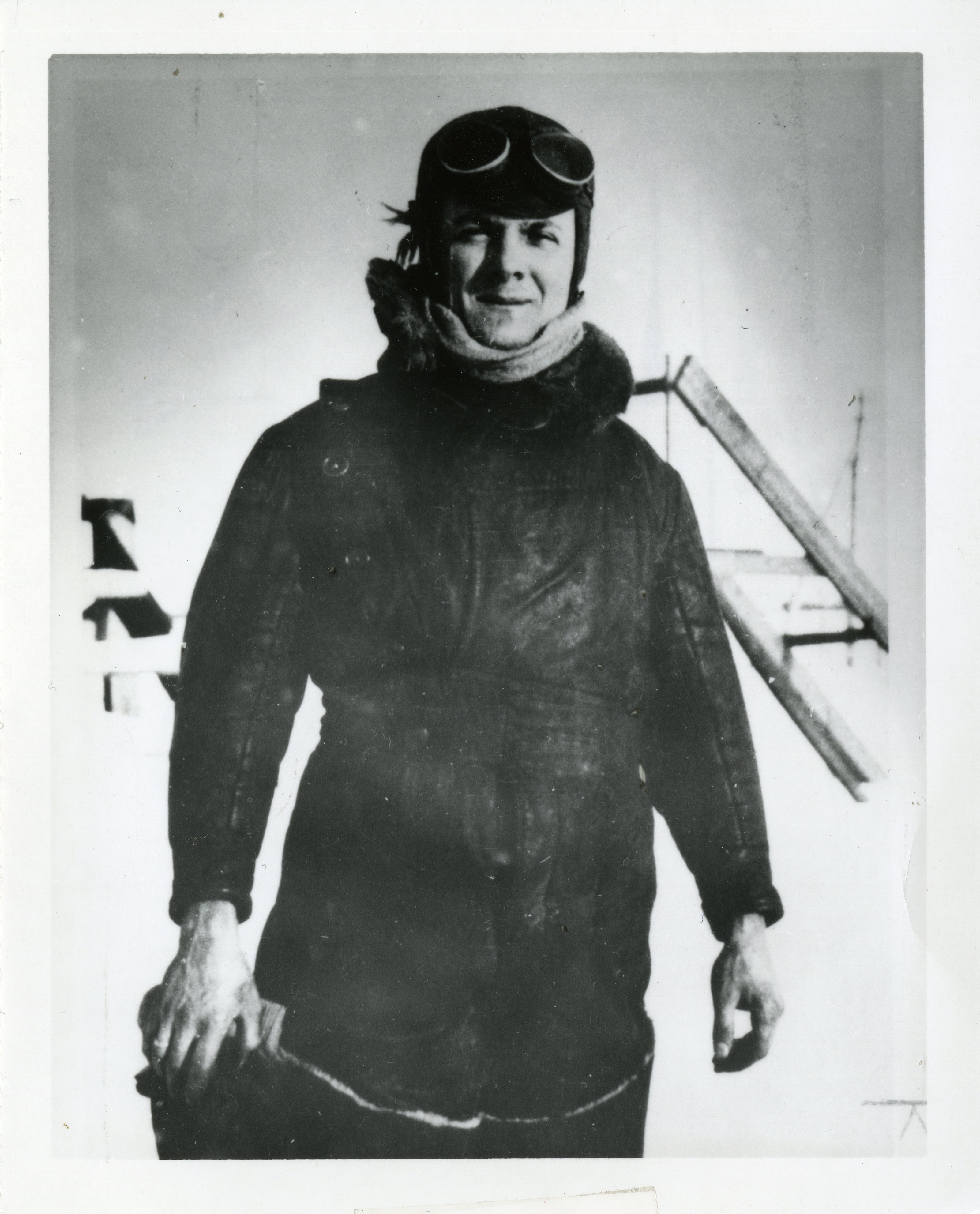Roméo Vachon, c.1920, artiste inconnu, Centre du patrimoine régional de Red Lake (Red Lake).
Courtoisie du Centre du patrimoine régional de Red Lake et des Archives du Manitoba.

Roméo Vachon, c.1920, artiste inconnu, Centre du patrimoine régional de Red Lake (Red Lake).
Courtoisie du Centre du patrimoine régional de Red Lake et des Archives du Manitoba.
Roméo Vachon, c.1920, Artist unknown, Red Lake Regional Heritage Centre (Red Lake).
Courtesy of Red Lake Regional Heritage Centre and Archives of Manitoba.


À une époque où les technologies envahissaient le monde pour le transformer à tout jamais, Roméo Vachon a énormément contribué au développement de l’aviation au Canada, lui qui est considéré comme étant un pionnier dans le domaine.
Né à Sainte-Marie-de-Beauce en 1898, son intérêt pour la mécanique l’a motivé à s’éloigner de la ferme familiale sur laquelle il a grandi. C’est donc durant la Première Guerre mondiale qu’il entamera sa carrière en tant que mécanicien dans la marine canadienne. Puis, en 1920, il fera un choix particulièrement audacieux pour l’époque en choisissant de devenir aviateur. Sa compétence en tant que mécanicien lui permettra de rapidement gagner la confiance de ses supérieurs et c’est pourquoi il sera vite mis aux commandes d’un avion. Une de ses premières tâches fut d’explorer le nord du Québec, une région assez méconnue à l’époque et d’y repérer des feux de forêt. Rejoignant l’Ontario Provincial Air Service en 1924, c’est trois ans plus tard qu’il va devenir actif en tant que facteur aérien. En effet, Vachon a longtemps parcouru la rive nord du fleuve Saint-Laurent pour distribuer le courrier qu’il lançait par-dessus bord, près des bureaux de poste identifiés pas des drapeaux. Il va aussi jouer le rôle d’une ambulance en ramenant certaines personnes malades vers les centres urbains afin qu’elles puissent avoir accès à des soins de qualité. Reconnu pour son courage et son intelligence, il va aussi innover en protégeant son moteur par un morceau de métal, ce qui aidait à le garder au chaud et à parcourir des plus longues distances.
C’est finalement en 1928 que la reconnaissance de ses qualités d’aviateur dépassera les frontières du Canada. Effectivement, c’est à cette époque qu’un avion allemand du nom de Junkers W-33 Bremen devait traverser l’Atlantique pour se rendre à New-York. Les pilotes vont toutefois se perdre dans une tempête qui va les obliger à atterrir aux abords de Blanc-Sablon, entre le Québec et le Labrador. Incapables de redécoller, Vachon sera alors convoqué par le gouvernement canadien et il jouera un rôle déterminant dans la mission apportant secours aux pilotes égarés. Puis, vers la fin de sa vie, il va contribuer au développement du plan de défense aérien du Canada lors de la Deuxième Guerre mondiale. Innovateur et ayant continuellement risqué sa vie au profit du développement de l’aviation, c’est finalement en décembre 1954 que Roméo Vachon s’est éteint à Ottawa.
At a time when the technology is invading the world to transform it forevermore, Roméo Vachon contributed enormously to the development of aviation in Canada, and he is considered a pioneer in the field.
Born in Sainte-Marie-de-Beauce in 1898, his interest in mechanics motivated him to move away from the family farm where he grew up. So it was that during the First World War he began his career as a mechanic in the Canadian Navy. Then, in 1920, he would make a particularly bold choice for the times by choosing to become an aviator. His skill as a mechanic would allow him to quickly gain the trust of his superiors and that is why he soon was in charge of an airplane. One of his first duties was to explore northern Québec, a region relatively unknown at the time, and to spot forest fires. He joined the Ontario Provincial Air Service in 1924, and three years later he would take on the work of delivering the mail by plane. Indeed, Vachon had long travelled the north shore of the St. Lawrence River to deliver mail, throwing it overboard near the post offices identified by flags. He also played the role of an ambulance picking up sick people and carrying them to urban centres so they could have access to quality care. Known for his courage and intelligence, he would also innovate by protecting the engine with a piece of metal, which helped keep it warm and travel longer distances.
It was finally in 1928 that recognition of his skills as an aviator went beyond the Canadian border. Indeed, it was at this time that a German plane by the name of Junkers W-33 Bremen crossed the Atlantic in order to land in New York. However, the pilots got lost in a storm that forced them to land in the outskirts of Blanc-Sablon, between Québec and Labrador. Unable to take off again, Vachon was then called upon by the Canadian government and he would then be instrumental in the mission to rescue lost pilots. Then, towards the end of his life, he would contribute to the development of Canada’s air defence plan for the Second World War. An innovator who continually risked his life to further the development of aviation, it was finally in December 1954 that Roméo Vachon died in Ottawa.
Réseau du patrimoine franco-ontarien (RPFO)
Source
Aménagé dans le poste de sauvetage de la mine du vieux district et dans une cabane en bois rond de deux étages (1929), ce musée raconte l’histoire et le patrimoine naturel et culturel du district de Red Lake. Ses expositions comprennent des artefacts du peuple Anishinabee et d’autres peuples des Premières Nations.
The Centre is open year-round and houses a historical museum featuring displays on Aboriginal history, gold mining, the fur trade, immigration and much more.
Info: 51A Highway 105, Red Lake, ON, P0V 2M0
Tel: 807-727-3006
www.redlakemuseum.com